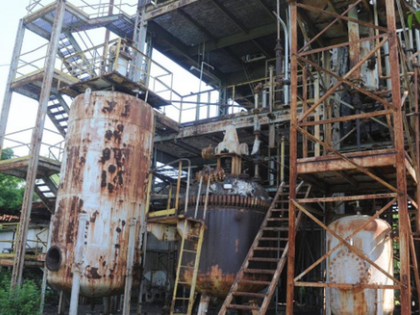Bhopal gas toxic waste disposal underway, four monitoring system in place
By IANS | Updated: May 6, 2025 16:47 IST2025-05-06T16:40:41+5:302025-05-06T16:47:34+5:30
Bhopal, May 6 After decades of lingering uncertainty, the disposal of "307 tonnes of toxic waste" (earlier 347 ...

Bhopal gas toxic waste disposal underway, four monitoring system in place
Bhopal, May 6 After decades of lingering uncertainty, the disposal of "307 tonnes of toxic waste" (earlier 347 tonnes) from the infamous Bhopal gas tragedy has begun in Pithampur.
The Madhya Pradesh High Court had already issued directives in this regard earlier.
"The process began from evening on Monday," a senior officer in the MP Pollution Control Board told IANS, adding, "The incineration is proceeding at a steady rate of 270 kilograms per hour at the facility, with environmental safeguards firmly in place.
A continuous online monitoring system has been installed to track emissions, ensuring compliance with pollution control regulations. The total process will take 50-55 days or even a few more days."
The toxic waste is being disposed of at a private facility.
To further mitigate environmental risks, experts are closely observing four key pollutants - particulate mercury, heavy matter, hydrogen chloride, sulfur dioxide, and carbon monoxide - emitted during the burning process.
"Additionally, air quality monitoring stations have been deployed at three locations across Pithampur (near Indore). Alongside the existing station in Tarpura, new sites in Chirakhan and Bajrangpura were operationalised on May 4 to reinforce oversight.
The 1984 Bhopal gas disaster claimed the lives of thousands of people and left several others injured when a poisonous gas, methyl-isocyanate, leaked from the factory on the intervening night of December 2-3, 1984.
The toxic waste has been lying in the factory since then.
"Four monitoring systems have been installed," the officer said.
The toxic waste, which had remained abandoned at the former Union Carbide facility for nearly 40 years, was finally transported to Pithampur from Bhopal in January 2025. In compliance with judicial directives, a phased trial run was conducted before full-scale disposal began, marking a significant step in the decades-long struggle to address industrial contamination.
After a trial incineration, the Madhya Pradesh government submitted a status report to the High Court in Jabalpur, detailing the successful completion. And the officials had told the court that the incineration process-expected to last 72 days-would proceed under strict guidelines set forth by the Central Pollution Control Board to prevent any harm to the public.
Despite these assurances, activists advocating for Bhopal gas tragedy survivors had raised concerns over secondary pollution. They argue that burning 300 metric tonnes of toxic waste could result in nearly 900 metric tonnes of residue, potentially exacerbating environmental hazards if dumped in a landfill. With the next court hearing scheduled for June 30, discussions on the long-term ecological impact of the waste disposal continue.
Disclaimer: This post has been auto-published from an agency feed without any modifications to the text and has not been reviewed by an editor
Open in app